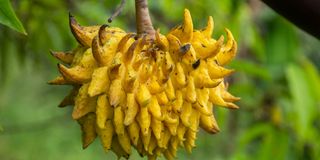Grafting produces fruit variety for those small spaces

What you need to know:
- Grafting is also useful when you want to preserve a heritage variety, or when you have a tree that flowers well but does not produce much fruit. It is a cheap and easy way to grow your own fruit tree from scratch so you never have to buy a tree from a nursery again.
Did you know that a single citrus tree has the capacity to give you about four types of citrus fruits? Thanks to a propagation method known as grafting, you no longer need an expanse of land or so many trees to harvest a variety of fruits.
Grafting basically refers to fusing two different trees into one. Apart from the primary benefit of getting more from a limited space, grafting has plenty of other benefits such as drought resistance and shorter period of fruition. Trees planted from seed, take between 10 and 20 to start producing fruit, while those grafted from branches of a mature tree take about two or three years to start producing fruit.
Grafting is also useful when you want to preserve a heritage variety, or when you have a tree that flowers well but does not produce much fruit. It is a cheap and easy way to grow your own fruit tree from scratch so you never have to buy a tree from a nursery again.
Process
According to Soren Jegindoe, a horticulturalist at The Tropical Fruit Farm, grafting is an easy process that any novice gardener can learn.
He recommends sub-tropical and tropical species for backyard gardeners because they thrive and yield fruit with only basic knowledge, unlike temperate species that are difficult to grow in the Ugandan climate.
“Species such as the apple and strawberry require skilled horticultural practices which most backyard farmers do not have,” Jegindoe explains.
The diverse nature of sub-tropical or tropical species offers a wide range from small shrubs, vines and tall trees. Jegindoe explains that some of these trees grow fruit on tree barks such as the Jaboticaba.
Other popular trees for grafting include Canistel, Black Sapote, Biriba and Ice Cream Bean.
“Generally, there are a lot of different fruit trees you can graft together, such as various citrus fruits on one tree such as oranges, lemons and limes. The trick to grafting is to use trees that are similar to one another! It can get pretty wild,” says Jegindoe.
Type
The plant expert suggests a dwarf selection for trees which is possibly determined by the rootstock since most them are grafted. Others will require grafting or air laying to maintain the specific characteristics of the fruit variety.
“In case you are operating in a small space, smaller trees are convenient to prune and easy to manage as well as more attractive to sell. Some shrubs such as Cedar Bay Cherry fit into most gardens due to the size and lower light requirements. The tree also has beautiful ornamental foliage,” says Jegindoe.
Others such as Black Sapote are bigger trees, extremely hardy and produce large fruit suited for export and large garden spaces. The large plant has a deep shade which might not be attractive for everyone and also seedling trees may take up to five or six years to flower.
Conditions
Before starting the grafting process, first get a site assessment to find out whether it can support you tree of choice. Most tropical species do not require special soil, irrigation or skilled horticultural practices
“Some species are drought resistant and thrive best in dry regions as the soils must be well drained with a slightly acidic pH,” he says.
The expert recommends planting during the two rainy seasons for those in the central region. “Different species produce fruits at different times of the year, but in central Uganda they will be correlated to the rainy seasons,” he notes.



